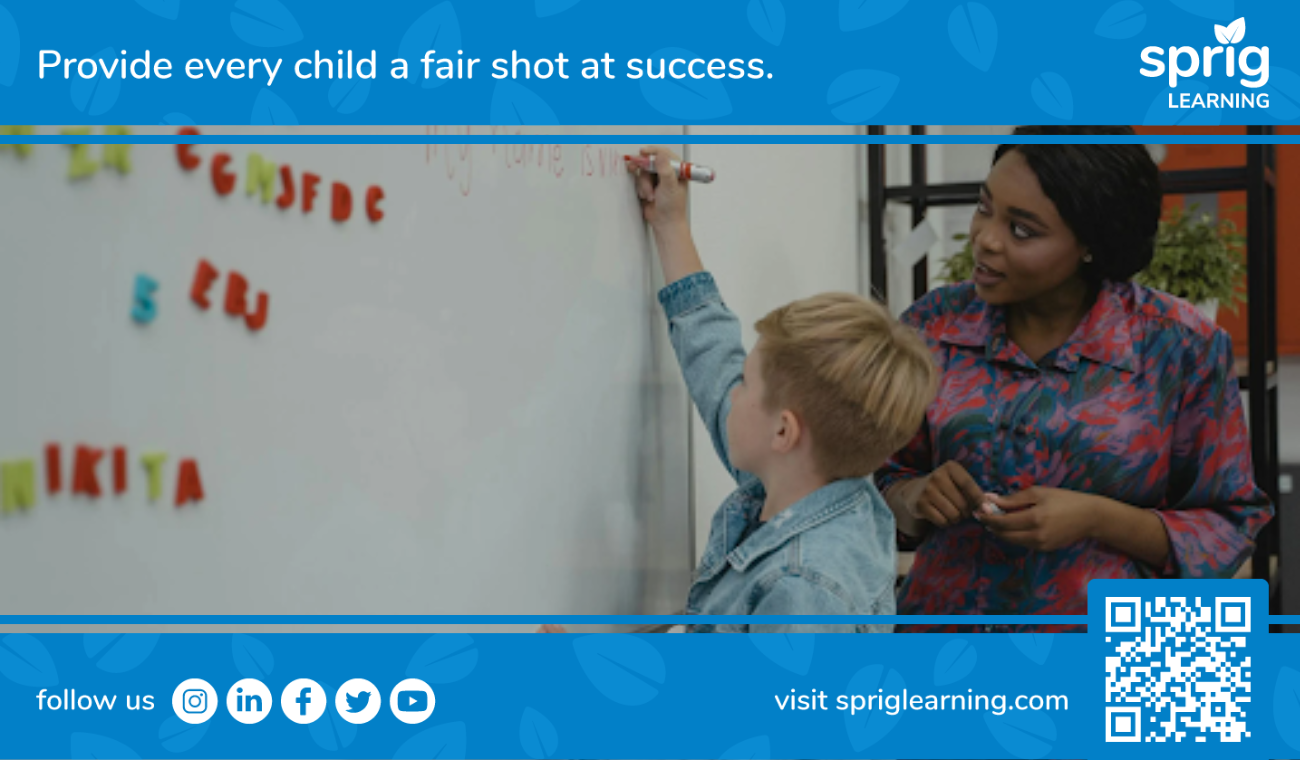Activity-based Learning plays a crucial role in early literacy.
To optimize its potential, it’s essential to understand what it entails, its core element of active engagement, how it integrates with other learning approaches, and how it extends beyond instruction into assessments.
This article covers it all, finishing with looking at ways in which activity-based learning impacts early literacy assessments.
Definition of Activity-based Learning

Activity-based Learning refers to an educational approach that engages students through hands-on activities, allowing them to actively participate and interact with the learning material.
This method emphasizes ‘doing’ over passive listening, encouraging children to explore, experiment, and practice skills in real-time.
In early literacy, this involves tasks like phonics games, interactive story-telling, and word-sorting activities.
Play-based learning shares all the same characteristics as activity-based learning in terms of being action-driven and interactive, but play is only one type of activity.
Activity-based Learning extends beyond play-based learning.
While play-based learning emphasizes exploration through games and playful activities, activity-based learning also includes experiential learning, project-based tasks, problem-solving activities, and collaborative exercises.
Why Give Importance to Activities?

Activities are crucial in early literacy development because they provide opportunities for practical application of learned skills.
In evidence-based early literacy, there is no substitute for explicit instruction.
But in order to demonstrate the taught concepts or practice these lessons for mastery, there needs to be further engagement in the classroom. Often, this takes the form of activities.
Some of the most popular forms of activities are mentioned below, all of which help solidify students’ understanding of literacy concepts:
Practice
Research highlights that consistent and targeted practice, especially through interactive and engaging activities, significantly improves reading outcomes and long-term literacy success.
The Education Endowment Foundation lists evidence-based strategies to practice early literacy, building on approaches that foster communication and oral language.
These methods highlight the importance of active learning through questioning and discussion, emphasizing activity-based learning’s role in effective literacy instruction.
Project-based Learning
Projects allow for an in-depth exploration of literacy topics. There can be individual projects or those that involve collaborative group work.
For instance, building a class storybook can improve understanding of narrative structure, vocabulary, and grammar.
In an article featured by the International Literacy Association, Dr. Miranda S. Fitzgerald, assistant professor of reading and literacy education at the University of North Carolina at Charlotte, highlights instances where early learners outperform their peers when engaged in project-based learning.
Learning Centers
Literacy centers provide children with the opportunity to engage in different activities that target various literacy skills. They are also commonly referred to as literacy stations.
Centers can include phonics games, sentence-building tasks, or storytelling activities, which allow students to demonstrate their skills.
An added benefit of these centers is that they can be used by multiple groups of children on a rotating basis.
The Greater Domain of Activity-based Learning

Earlier, it was established that play-based learning is a subset of activity-based learning.
Besides play-based learning, activity-based learning holds great dominion over other pedagogical approaches, particularly experiential, and multisensory learning.
All these types of learning contain activities that are mentioned below:
Play-based Learning
Play-based learning offers children a natural and engaging way to grasp literacy concepts through exploration, experimentation, and interaction.
In the context of early literacy, play invites children to immerse themselves in language activities, such as letter-matching games, word-building with blocks, or storytelling with puppets.
These playful scenarios provide a low-pressure environment where children develop phonemic awareness, vocabulary, and sentence structure while simply having fun.
The importance of play lies in its ability to seamlessly blend imagination with literacy development.
Activities like role-playing as a character from a book or creating words with magnetic letters serve to solidify abstract literacy concepts by associating them with familiar, hands-on experiences.
Experiential Learning
Experiential learning in early literacy engages children in meaningful, real-world literacy tasks that allow them to directly apply what they’ve learned.
Activities such as reading environmental print like road signs or menus, or participating in a simulated post office help contextualize reading and writing, turning abstract concepts into tangible, everyday experiences.
Children are no longer passive recipients of information; they become active participants in literacy.
The immersive nature of experiential learning fosters higher retention rates and deepens understanding, as it links classroom instruction to practical, real-world use.
Multisensory Learning
Activity-based learning often incorporates multisensory techniques to enhance literacy learning, particularly by engaging multiple senses, such as sight, touch, sound, and movement.
Multisensory learning taps into different parts of the brain, allowing children to process and retain information more effectively.
For example, tracing letters in sand while vocalizing the corresponding sound or using color-coded cards to group words by phonics rules appeals to tactile, visual, and auditory learners simultaneously.
This holistic approach strengthens neural connections, helping children absorb and retain literacy skills at a deeper level.
Activity in Assessments

Thus far, activities are described in the form of teaching and practicing. What about assessing?
Assessments in activity-based learning environments often take the form of quizzes, games, or interactive tasks that allow teachers to evaluate literacy progress while children engage in learning.
This approach ensures that assessments are a natural extension of the learning process. In this way, they are as much as assessments for learning, as assessment of learning.
In other words, activity-based assessments can be said to be more informal, and can be compared to formative assessments, which are absolutely indispensable to early learning success.
While all kinds of assessments are needed in an early literacy assessment toolkit, activity-based learning’s strong connection to formative assessment certainly makes it a force to reckon with.
Especially considering that formative assessments such as progress monitoring assessments occur more frequently than other assessments, they need to be fun, engaging and interactive.
Otherwise, their powers of providing real-time insights into a child’s reading ability may wear off, due to both teacher and student burnout.
Styles of Assessments and Expression of Activity-based Learning

There are many styles of assessments. Activity-based learning expresses itself in many ways in how it impacts early literacy. Here are some of the best early literacy activities for teaching foundational reading skills.
Whether you need help in choosing assessment design factors, or balancing considerations such as control, perspective, frequency and timeline, there are many great reads from the Sprig Blog that detail each aspect.
Focusing on activity-based learning, which of these particular assessment types is best suited for activities?
Teacher-led Assessments occur when teacher’s guide assessments. They ask questions and score the responses appropriately as needed.
Interactive Student Assessments occur when students engage in literacy tasks independently while teachers observe and record progress. They are also known as observation assessments.
Student-led Assessments occur when students engage directly with the learning material, which itself facilitates the assessment process. Teachers may oversee the activity, but they do not intervene in recording responses or observing performance.
It’s difficult to answer, because all contain activities. Whether it is the teacher facilitating the activity, or the student independently doing the activity, or both of them co-participating.
By its very nature, assessments lend themselves well to activity-based learning,but it is important to specialize in a certain style depending on the needs of the classroom.
For example, Sprig Explorers and Sprig Reading, two tools designed for driving early literacy equity, both use activity-based learning principles in literacy evaluation.
While Sprig Explorers uses game-based learning where early learners interact directly with a game, Sprig Reading leaves it up to the teacher to monitor and track reading progress.
Both however, call upon a certain activity to be performed, the completion of which is crucial to early reading success!

